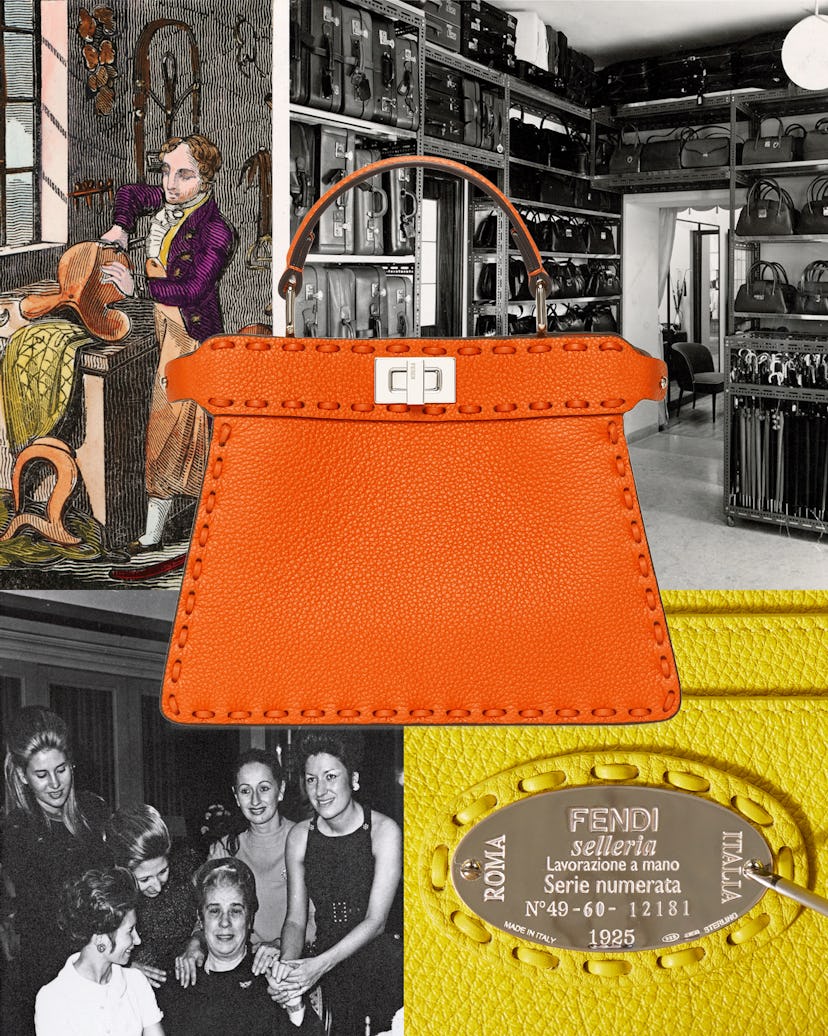How the Fendi Selleria Bag Became a House Classic
Gearing up for its centenary celebration, Fendi looks forward by reclaiming its storied past.

When it comes to exquisite leather goods, all roads lead to Rome—specifically, to Fendi. What began as a tiny local concern founded nearly a century ago by Adele and Edoardo Fendi has grown into an international powerhouse and a byword for both artisanal savoir faire and contemporary design. If Fendi today is high-fashion shorthand for outstanding craftsmanship, it is in no small part due to the success of Selleria, a tone-on-tone top-stitching technique borrowed from Rome’s master saddlers. (The word means “saddlery” in Italian.)
Handsewn and made of the highest-quality leather, Fendi’s Selleria bags were an instant success when they were introduced in 1925. Two decades later, the Fendi reins were passed from Adele and Edoardo to their daughters, Anna, Alda, Carla, Franca, and Paola, with each taking responsibility for a specific aspect of the business. The glamorous sisters were joined in 1965 by a young Karl Lagerfeld, who helped to develop the double-F brand for 54 years, and later by Silvia Venturini Fendi, a third-generation member of the dynasty. These days, the womenswear and couture collections are helmed by the British designer Kim Jones, while Venturini Fendi is responsible for menswear and accessories. Her daughter, Delfina Delettrez Fendi, oversees the jewelry collections.
Despite the changes at the top, Selleria accessories remain as enduringly chic as the Eternal City. Fendi artisans still perform the saddle stitching entirely by hand on the house’s Cuoio Romano leathers—buttery-soft, nubby-textured skins. And to this day, each Selleria bag arrives with a sterling silver tag engraved with a unique serial number and the year 1925. “Discretion matters, and workmanship does not necessarily require a typical logo,” explains Venturini Fendi. “Selleria is a Fendi signature; it’s part of our handwriting and our Roman roots.”
Selleria stitching appears on Fendi’s iconic Peekaboo and Baguette models—and, now, on the Peekaboo Petite, Mini Baguette, and Mini Fendessence hobo bag. It can also be found on even smaller leather goods, such as wallets and cases. “You take something from the past, work with it, and celebrate it,” says Jones. “There is a malleability to history—it is something that you make your own. The Selleria is fundamental to Fendi history, and yet it always looks modern. It connects the past to the present and the future.”
As Fendi prepares for its official centenary, in 2025—a celebration that is guaranteed to garner plenty of international attention—it’s not hard to see why Selleria continues to be an important pillar for the company. As Venturini Fendi puts it, “In many ways, it shows what we are and who we are.” Certo!
Courtesy of Fendi.
Family matriarch Adele Fendi with her five daughters, 1967.
Courtesy of Fendi.
Fendi heels with Selleria-like metal “stitching” on the spring 2024 runway.
Florilegius/Universal Images Group via Getty Images.
A woodcut engraving from The Book of English Trades, and Library of the Useful Arts depicts a saddler at work, 1818.
Courtesy of Fendi.
The Fendi shop in Rome, 1954.
Courtesy of Fendi.
The sterling silver logo tag attached to each bag.